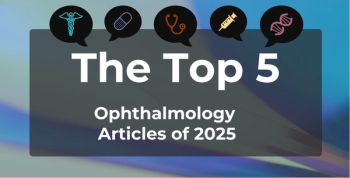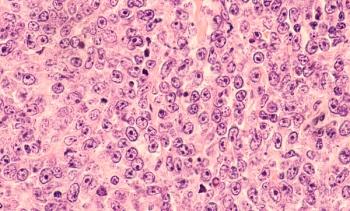
Contributor: A Behavioral Science–Based Approach to Engaging the Highest-Risk, Hardest-to-Reach Patients
Strategies to help Medicare Advantage plans boost Star Ratings by improving medication adherence among seemingly “unengageable” members
Health plan specialists recognize that increased member engagement is closely linked to improved health outcomes, enhanced member experiences, and reduced medical expenses. However, individuals with high-risk health conditions, numerous social determinants of health (SDOH) challenges, and a history of non-responsiveness to both outreach and engagement efforts often pose significant challenges to health plans and are frequently considered “unengageable.”
These members are likely to struggle with basic self-management tasks, such as adhering to medication regimens—a crucial element in attaining optimal health for patients and a vital measure of care quality for the plan, directly affecting Star Ratings performance.
The importance of a focus on medication adherence in under-engaged members
Understanding and engaging the highest-risk, hardest-to-reach members is often the critical "last mile" for Medicare Advantage (MA) plans aiming to capitalize on the rewards associated with achieving 4.0+ scores in their Star Ratings (and avoid the penalties of low performance).
Today, 3 primary medication adherence measures for prevalent chronic diseases are triple-weighted and serve as a powerful “
Top performers, and those who can get a handle on medication adherence among members, gain access to a substantial share of the nearly
With
The process begins with a scientifically informed approach to engaging closely with unengaged members, identifying their needs and obstacles, and providing actionable support and strategies to help them overcome these barriers and improve their self-management.
Harnessing behavioral science to empower sustained member engagement
Utilizing behavioral science techniques, like the Information-Motivation-Behavioral Skills (IMB) Model,1 can accelerate relationship building and foster meaningful change among members struggling to adopt healthy behaviors.
The IMB Model identifies 3 key determinants of health behaviors that relate to medication adherence:
- Information: Members’ knowledge and ideas about medication, including how it works, proper dosing, and affordability concerns
- Motivation: Members’ willingness to adhere to medication regimens, influenced by accurate information and past experiences
- Behavioral Skills: The abilities required for medication adherence, including both objective skills (eg, access to transportation to a pharmacy) and subjective skills (eg, believing they know how to discuss side effects with a pharmacist)
Considering these and other behavioral determinants when working with historically unengaged individuals allows outreach staff to set baseline expectations and identify opportunities for education. It also helps in changing members’ negative beliefs and attitudes, strengthening their social motivators, and providing them with the necessary skills and support to make healthy changes that improve their health outcomes.
3 key steps for building strong relationships with unengaged members
To establish behavior-changing rapport and resolve the clinical and SDOH barriers often responsible for low engagement levels and poor adherence, MA plans must take a coordinated, data-driven approach to understanding their specific populations. This starts with analyzing member data to identify high-priority targets for outreach, creating a tailored strategy for engagement, and conducting regular follow-ups to ensure ongoing participation in personal health goals.
Step 1: Target and connect with high-priority populations
Plans should start by using an advanced analytics platform to review historical data and identify individuals likely to incur higher costs and be less engaged. Indicators include:
- Multiple comorbidities (like diabetes, cardiovascular conditions, chronic obstructive pulmonary disease, cancer and behavioral health issues)
- Frequent emergency department use, multiple hospitalizations, or 30-day readmissions
- Poor medication adherence or haphazard prescription refills
- Gaps in critical health services (such as wellness visits and cancer screenings)
- Low-income subsidy, dual eligibility, or disability status
- Residency in underserved regions
- SDOH barriers like food insecurity, poor health literacy, or transportation issues
Health plans or data platforms may discover simple fixes, such as updating incorrect contact information, or using the member’s preferred contact method or language. Employing multimodal communication strategies, including physical mail, postcards, text messages, phone calls and emails ensures that plans can meet all member communication needs. Providing actionable data to a member’s doctors and pharmacies ensures information consistency throughout the care continuum. Leveraging various communication methods and a mix of touchpoints helps the right approach reach the right member, leading to better health outcomes. Often,
When designing outreach programs, plans must consider the nuances of communicating with individuals facing SDOH barriers, such as the best time of the month for low-income individuals to have phone minutes, or the optimal time to connect with those working night shifts or providing constant care for a loved one. Sensitivity and respect for these issues will enable plans to effectively engage with these challenging members, establishing a foundation for stronger relationships.
Step 2: Engage in personalized relationship-building through experienced outreach staff
Engagement with high-needs members requires a personalized approach. MA plans can benefit from leveraging experienced, empathetic, and adaptable outreach staff, supported by a robust data platform that provides relevant information during conversations, to build meaningful rapport with members.
Using effective strategies like motivational interviewing helps identify and overcome barriers based on the IMB model, addressing members' capacities, needs, and intrinsic goals. This enables outreach staff to engage members more effectively.
A technology platform that tracks interactions and suggests the "next best action" for clinicians is essential to avoid the friction of members needing to repeat sensitive information to multiple clinicians. More informed interactions help plans build and maintain trust with members, especially among those who have been hesitant to engage with their health plan in the past.
A logical technology workflow simplifies connecting individuals with resources to address their SDOH issues, including providing information on unused plan benefits or making electronic referrals to local community organizations. This leads to better medication adherence, improved health outcomes, enhanced member experiences, and ultimately higher Star Ratings.
For instance, AdhereHealth implemented a coordinated, data-driven engagement strategy for a 10,000-member cohort from a national MA plan that had been considered “unengaged” for 6 to 18 months. By focusing on relationship-building, understanding SDOH barriers, and actively resolving concerns to promote ongoing adherence, AdhereHealth achieved a 65% engagement rate, contributing to the plan’s success in exceeding Star Ratings goals.
Step 3: Keep the conversation going with an emphasis on impactful, longitudinal adherence
High-value Stars metrics, like medication adherence, require consistent member engagement throughout the year. This necessitates regular follow-ups to ensure continued care and ongoing resolution of previously resolved barriers.
Multiple outreach sessions allow plans to identify and resolve drug therapy problems with prescriptions and close other care gaps, such as completing Health Risk Assessments.
Simultaneously, robust dashboards and downloadable reporting provide plans with customizable, actionable insights into key performance metrics to help maintain an effective program. Detailed, data-rich visualizations of specific actions and outcomes enable plan leaders to anticipate trends and proactively address member issues during the time-limited Stars performance periods.
Conclusion
MA plans have a compelling reason to adopt SDOH-focused strategies that meaningfully impact each member’s health journey, including members previously considered “unengageable.” By integrating advanced analytics technology, personalized outreach grounded in behavioral science, and continuous trust-building initiatives, plans can achieve better member outcomes.
The pathway to success involves 3 crucial steps: identifying high-priority members, engaging them in their healthcare journey, and taking actionable steps to address their clinical and non-clinical challenges. This targeted approach not only enhances members’ health outcomes but also improves Star Ratings and financial incentives, driving both clinical and financial gains for MA plans.
Reference
- Mayberry L, Osborn C. Empirical Validation of the Information-Motivation-Behavioral Skills Model of Diabetes Medication Adherence: A Framework for Intervention. Diabetes Care. 2014;37(5):1246-1253. doi:10.2337/dc13-1828
Newsletter
Stay ahead of policy, cost, and value—subscribe to AJMC for expert insights at the intersection of clinical care and health economics.







































